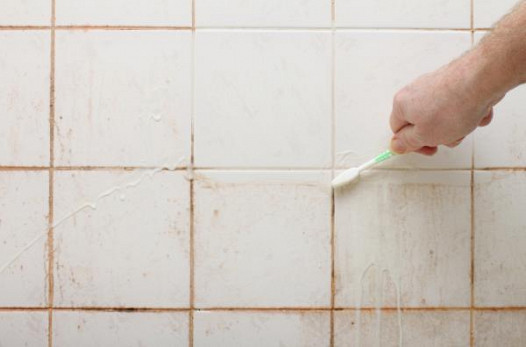They are making a number of good annotation related to How to Fix a Water Damage Bathroom as a whole in the article beneath.

The bathroom is incredibly prone for wet buildup and prospective water damage because of the constant use water in it. This article provides easy assessment strategies to aid detecting water damage risks.
The regular use of water in the restroom makes it incredibly prone for damp build-up and also possible water damages. By evaluating it regularly, you can reduce water related damages.
The following set of inspections is very easy to execute and also need to be done as soon as in every 3 months in order to maintain your washroom healthy and also to avoid prospective water problems triggered by the tub, the shower, pipe joints and also plumbing, sinks, closets, and also the bathroom
Do not disregard doing these assessments as well as be extensive while performing them. Keep in mind that these straightforward examinations can conserve you a great deal of money by offering early signs for water damages
Sinks as well as Cabinets
Sinks as well as cabinets are exposed to dampness and also moisture day-to-day and also are typically overlooked. Check frequently under the sink and on the countertop over it. Fix any drip in the trap as it might suggest drain troubles. Browse the sink, sluggish draining pipes might show an obstructed drainpipe. Replace sink seals if they are fractured or loosened.
Bathtub and Shower
The shower and also tub require unique interest and upkeep. Inspect the tiles and also replace if cracked. Make certain that there is no missing cement in between the tiles. Evaluate as well as replace split caulking at joints where the walls fulfill the floor or the bathtub. Blocked drains and also pipes troubles will prevent the bath tub from drying and also may show major troubles underneath the bathtub. Talk to a professional promptly to avoid architectural damage. Take notice of discolorations or soft locations around the bathtub wall surfaces as they may suggest an internal leak.
Plumbing
Signs for water damage are tough to detect considering that the majority of pipes are set up inside the wall surfaces.
Pay unique attention to floor covering and also walls wetness and also stains as they may suggest an undetectable plumbing problem. Check wetness degrees in adjacent rooms also.
The Commode
The commode is a susceptible water junction. Inspect the water lines and also look for leaks around the bathroom seat, in the pipe, and also under the water container. If you spot any type of indicators of dampness on the floor around the toilet, check for leaks in the toilet edge and also container seals.
Be aware that hanging toilet bowl antiperspirants boosts the opportunities for obstructions.
Water Damage Signs In The Bathroom To Avoid Cleanup
Musty smell
This is one of the easiest signs to catch because musty smells are so odorous. The damp, earthy, moldy smell should be a big red flag. The smell will develop when moisture gets trapped in surfaces, and begins to facilitate mold growth. Leaking pipes under cabinets, inside walls, and behind shower fixtures will cause moisture to stay trapped and not dry, which will lead to mold growth and spread. As soon as you notice any musty smells in your bathroom, have it checked for hidden water damage and cleanup signs.
Visible mold
If the smell isn’t there to give it away, sometimes you will actually see mold growth. Finding mold in your bathroom is a serious problem, because mold is very harmful to your health. By the time mold growth is visible, it also means that water damage has already occurred and been present for some time. The only way the mold problem can be resolved is to find the source of the moisture and get it stopped. To safely and adequately remove mold, you need to have professionals handle the remediation. Do not waste any time in getting mold problems addressed, fixed, and sanitized so that you can protect you and your family from the many respiratory symptoms caused by mold exposure.
Damaged floors
Bathroom floors should be able to withstand some exposure to water while still remaining in good condition. However, when excess exposure or water leaks occur, they will begin to damage even the most water-resistant flooring. If you notice any cracking, bubbling, staining, or warping on your bathroom floors, there is probably a water leak somewhere causing the distortion. If you notice areas of the floor have become softer, or even have a spongy feeling, there is probably damage to the subfloor. Subflooring is typically made up of plywood. When plywood is exposed to water or moisture, it will absorb it. Once it has become saturated, the weight of the excess water will cause the wood to swell and soften. Check the floors in your bathroom frequently to catch any of these sings before they lead to damaged subflooring.
Changes on walls
When water leaks behind walls, it will cause changes in the drywall. Peeling plaster, blistering paint, and soggy wallpaper are all good indicators that excess water is building up behind the wall. Water leaking behind drywall will cause it to swell and be soft to the tough. If you start to notice gaps along the trim of your walls, or where tile meets the wall, it could also be a strong indicator that there is a leak behind the wall. Any changes, distortion, or damage on the walls should be evaluated as soon as you notice it to prevent further water damage and cleanup.

As a reader about Common Causes of Water Damage in a Bathroom, I figured sharing that chunk was a good idea. Sharing is good. Helping others is fun. Thanks for your time. Don't hesitate to stop by our website back soon.
About